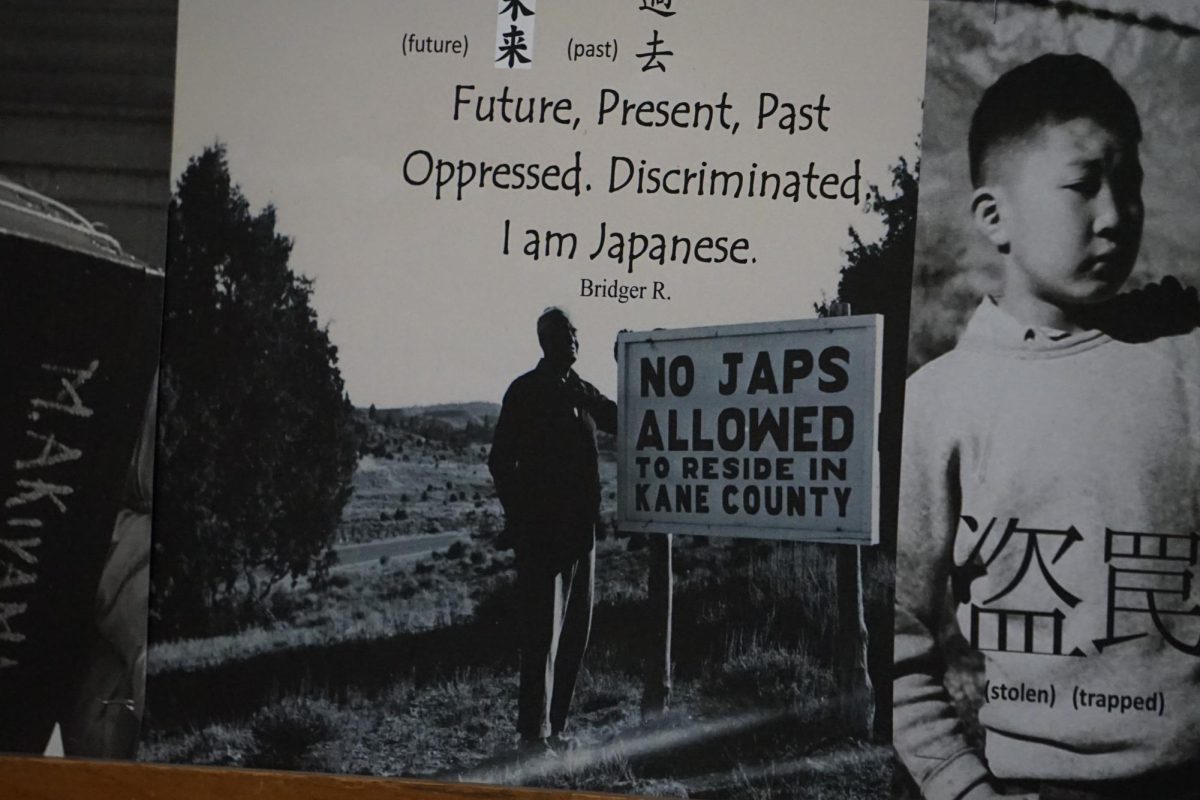For many students one of the most monotonous times in school is when you are doing the same kind of packet work over and over again in all your classes. Recently one of our teachers at Sentinel put together a project for her English class that is not only educational, but also allows creativity and connection to real life stories.
During a section of an English three class, Betty Bennett put together a project relating to Japanese immigrants and U.S. citizens who were sent to internment camps. This is where people of Japanese descent were taken to be isolated and ensure they were not a threat to the United States due to the Pearl Harbor bombing.
Her class read the book Thin Wood Walls, by David Patneaude where a story is unfolding about a boy who is a nisei (an American born Japanese) who tells his story of internment camps and how his family was devastatingly relocated and taken from him.
To express himself, the character uses haikus to express the mood and tone of all that is happening in his world. Prominently, this is the time where Pearl Harbor is of importance and the events cause a shift in his life as his family is taken from him and he is treated as a threat.
Bennett uses the Haikus to show her students how impactful a short bit of text can be when used right. As a normal expectation for English students, she uses this to help them understand tone and be able to create it all on their own with strength and significance.
These haikus were based around a picture of real life internment camps and other injustices faced at the time for Japanese immigrants. They then wrote their own haiku describing how the people in the photo feel and what they’re going through in that moment. Students then research real Japanese characters to put together a fitting title.
This is not only an important story to camputure and learn about, it is also in the history of the town we live in. Fort Missoula is one of the most intact internment camps in the nation. Bennet took her students there, of course, to see where the loyalty trials were held for many Japanese leaders to test for suspicion of involvement in thePearl Harbor bombing. None were pronounced guilty here, but they were forced to remain incarcerated.
The person who led the students tour was actually the grandson of a woman who had been put in internment camps.
This is so important, not in a matter of historical education, but because it is of relevance to the time we are in now. There are two significant parts of these stories that are prevalent to the world we are facing today. One being that the anniversary of the bombing of pearl harbor was 82 years ago as of December 7th. Obviously this isn’t a moment we should forget, as it leads us to a brutal war and a time we will never forget.
The other modern cultural significance is that of the injustice we face people with after violent moments like this. Bennett mentions that we use the actions as a scapegoat for people of ethnicity related to tragedies. Now, we must face the injustice members of the United States are giving to American citizens of palestinian descent. As in the last couple weeks there have been assaults and murders in regards to putting the blame for conflict in regards to the war in the middle east as flashing light for any one of that decent living in our country.
This is but a short story of the involvement and dedication that came with Bennetts work and the education she provides. In the long time Benntte has worked here, we can’t deny that she has provided a lot for us Spartans. She has been here at sentinel for 26 years and is one of our longest devoted staff members here at MCPS with a total of 37 years.
A special thing to mention about Bennett, if it is not obvious enough, is the education she strives to have in regards to all sorts of cultures and indigenous people is enviable. One of her co-workers that has nothing but good things to mention about her talks about the significance of the unique projects she uses in her teaching. As mentioned at the beginning, this is one part of the education system that doesn’t seem to be catered to or brought to its full potential. But, when it comes to Bennett you will never fail to love the work done in her class, nor the eccentricness brought to the projects.
Reading a book and answering questions about it is an easy thing to do and comes with little cognitive benefit of the meaning behind the text being written. Being able to delve into text and work to better understand cultural significance is vital to the learning process. This part of Bennett’s work is really strong, as she believes there is a strong need for indigenous stories to be told. She explains that as she was a kid and going through school she was taught the bare minimum in regards to this part of the United States history.
“When I was growing up in Montana, little was said about the Native Americans other than they murdered General Custer.”
If it isn’t obvious enough this is a problem and the approach taken by Bennett is nothing short of prosperous as she claims the history of Montana in and of itself is rich let alone the history of all immigrants in the United States. “[they] made our state what it is today.”
Though I’ve never had Bennett as a teacher myself, I can appreciate the work she has done and admire the strength taken to educate on the people who in our past have had little voice in the world we live in today.





